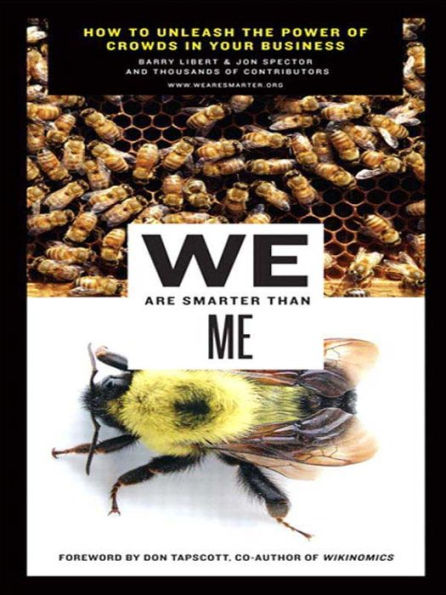Wikinomics and The Wisdom of Crowds identified the phenomena of emerging social networks, but they do not confront how businesses can profit from the wisdom of crowds. WE ARE SMARTER THAN ME by Barry Libert and Jon Spector, Foreword by Wikinomics author Don Tapscott, is the first book to show anyone in business how to profit from the wisdom of crowds. Drawing on their own research and the insights from an enormous community of more than 4,000 people, Barry Libert and Jon Spector have written a book that reveals what works, and what doesn't, when you are building community into your decision making and business processes. In We Are Smarter Than Me, you will discover exactly how to use social networking and community in your business, driving better decision-making and greater profitability. The book shares powerful insights and new case studies from product development, manufacturing, marketing, customer service, finance, management, and beyond. You'll learn which business functions can best be accomplished or supported by communities; how to provide effective moderation, balance structure with independence, manage risk, define success, implement effective metrics, and much more. From tools and processes to culture and leadership, We Are Smarter than Me will help you transform the promise of social networking into a profitable reality.
Wikinomics and The Wisdom of Crowds identified the phenomena of emerging social networks, but they do not confront how businesses can profit from the wisdom of crowds. WE ARE SMARTER THAN ME by Barry Libert and Jon Spector, Foreword by Wikinomics author Don Tapscott, is the first book to show anyone in business how to profit from the wisdom of crowds. Drawing on their own research and the insights from an enormous community of more than 4,000 people, Barry Libert and Jon Spector have written a book that reveals what works, and what doesn't, when you are building community into your decision making and business processes. In We Are Smarter Than Me, you will discover exactly how to use social networking and community in your business, driving better decision-making and greater profitability. The book shares powerful insights and new case studies from product development, manufacturing, marketing, customer service, finance, management, and beyond. You'll learn which business functions can best be accomplished or supported by communities; how to provide effective moderation, balance structure with independence, manage risk, define success, implement effective metrics, and much more. From tools and processes to culture and leadership, We Are Smarter than Me will help you transform the promise of social networking into a profitable reality.

We Are Smarter Than Me: How to Unleash the Power of Crowds in Your Business
176
We Are Smarter Than Me: How to Unleash the Power of Crowds in Your Business
176
Product Details
| ISBN-13: | 9780132716451 |
|---|---|
| Publisher: | Pearson Education |
| Publication date: | 09/25/2007 |
| Sold by: | Barnes & Noble |
| Format: | eBook |
| Pages: | 176 |
| File size: | 4 MB |
